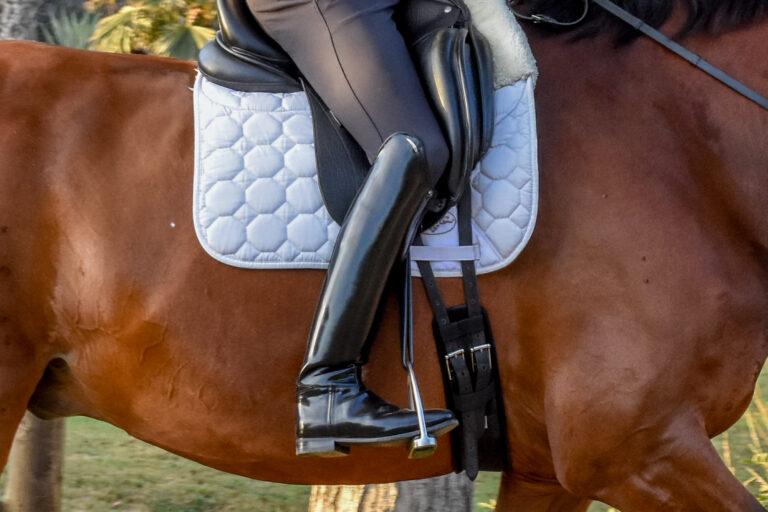If there’s one movement that’s guaranteed to frustrate a rider before they figure it out, it’s travers. The irony is that most horses will tend to carry their haunches to the inside to a certain degree, that is until the rider wants the haunches to come in. Then everything seems to come in except the haunches.

Learning to control the outside shoulder helps to straighten the horse so that the haunches stay in line with the front end. But it also helps establish and control the bend that will allow the rider to place the haunches wherever she wants, including for travers
Not many people may have noticed, but a subtle change to the definition of travers went into the USEF Rule Book last month. Actually, it was more of a clarification than a real change. The new definition reads:
“This exercise is performed in collected trot. The forehand remains on the track with the head looking straight along the track. The haunches are moved to the inside, with the horse slightly bent toward the direction of movement, so that from the front or behind one sees four tracks. The degree of bend is greater than that of shoulder-in and a constant angle of approximately 35 degrees should be shown. The horse’s outside hind leg passes and crosses in front of the inside hind leg. The outside foreleg is placed in front of the inside foreleg. To start the travers, the haunches must leave the track or, after a corner or circle, are not brought back onto the track. At the end of the travers, the quarters are brought back onto the track as in finishing a circle.’
Maybe that sounds like the travers you’ve been aiming for all along. Part of the clarification is the phrase “with the head looking straight along the track.” Other new phrases include “from the front or behind one sees four tracks,” and “The outside foreleg is placed in front of the inside foreleg.”
I particularly like the phrase about where the head is looking. Too often I see riders performing a travers (or think they are performing a travers) where the horse is looking toward the outside of the ring rather than straight down the track. This figure therefore has too much angle and not enough bend and, thus, also not enough engagement.
The phrase in regard to four tracks also should help riders understand how much angle is needed. Again, I see so-called travers where the head is indeed looking down the track but the tail remains on the track as well – and thus has no angle at all.
The part that hasn’t changed is at the end where it states that the haunches must leave the track or are not brought back onto the track after a corner or circle. Paying attention to this phrase should help those riders who have trouble with travers to understand that just the front end of the horse finishes a corner or circle before starting that movement.
The travers shows up only at Second Level, but it is hugely important to anyone who aims to move up the levels from there and wants to understand the half pass, which is basically a travers on the diagonal. If you are having trouble with the half pass, it helps to go back to the travers along the track, which gives you a point of reference. If you can’t aim the front end down the track, while at the same time establishing the bend that maintains the haunches to the inside of the track, then you will find it much more difficult to do the same thing on the diagonal.











